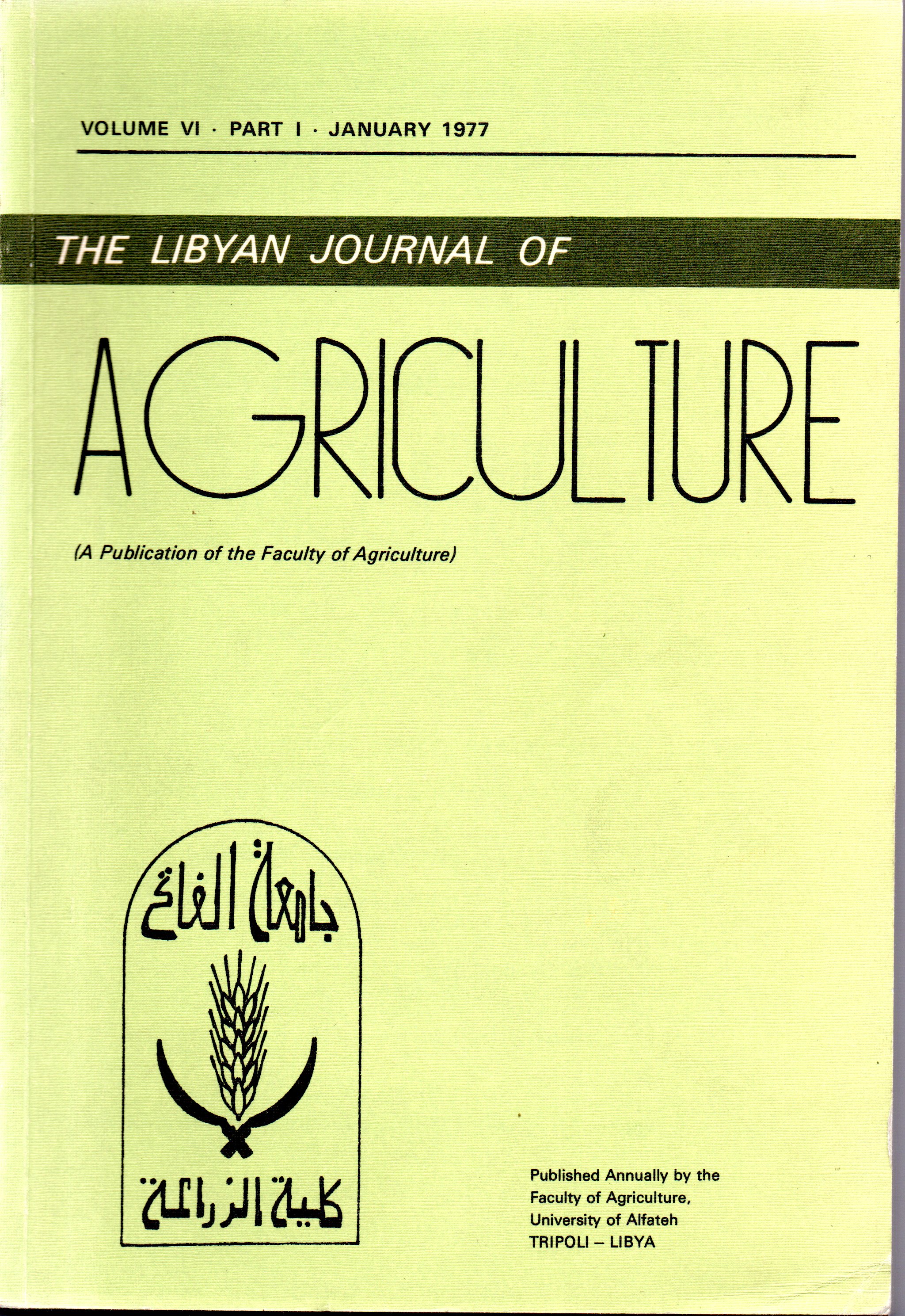Response of Growth and Yield of Tall-Straw Wheat (Triticum aestivum L.) to Salinized Water Irrigation and Cycocel (CCC)
Main Article Content
Abstract
The effect of irrigation with salinized water and cycocel application on seedling emergence, growth, yield, and yield components of the tall-straw wheat cultivar ‘Florence Aurora' was studied under the greenhouse conditions (at the Faculty of Agriculture, Alfateh University, Tripoli, Libya in 1974-1975).
Seedling emergence was delayed by increasing the salinity level one week after sowing. However, after ten days from sowing the seedling emergence percentages were comparable for the different treatments. The low and medium salinity levels (3,000 and 6,000 ppm) exerted a supressing effect on seedling emergence for the rest of germination period. On the other hand, the highest salinity level (9,000 ppm) resulted in a stimulating effect, since it gave the maximum seedling emergence percentage. This stimulating effect might be caused by the positive effect of high salinity which increased the seed viability and/or controlled the soil microorganisms that attack the germinating seeds and occasionally cause their failure to emerge above the soil surface. At harvest, plant height, spike length, tillering and grain weight per spike were decreased by both increasing the salinity level and spraying the plants with cycocel. On the other hand, while the total yield, grain yield, number of spikes and number of grains per plant were decreased by increasing salinity, they were not significantly affected by the cycocel treatment.
Straw yield per plant was increased by increasing the salinity level. However, it was unaffected by the cycocel treatment.

